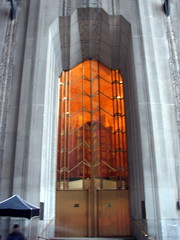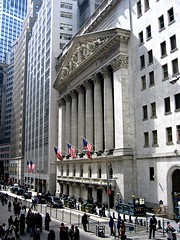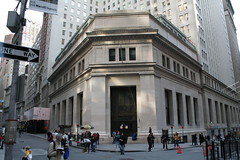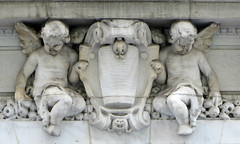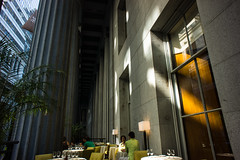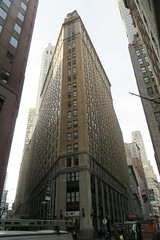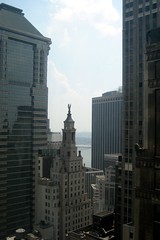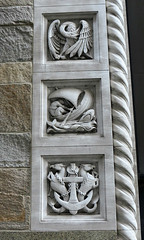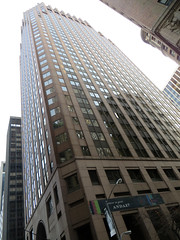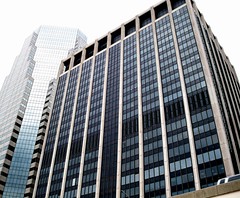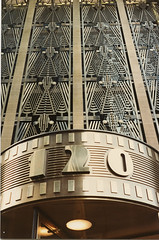North:
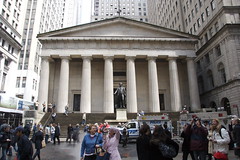
28 (corner): The site of New York's second city hall,
built in 1703. Probably the most historic location
in New York City, and one of the most important in the U.S.,
this was where George Washington was sworn in as our
first president on April 30, 1789, an event marked with
an 1883 statue of Washington
by John Quincy Adams Ward.
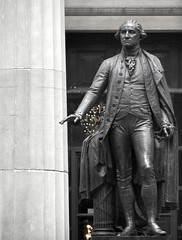
This was also where the Bill
of Rights was adopted on September 25, 1789; where the
Continental Congress approved the Northwest Ordinance in
1787; where the
Stamp Act Congress met to protest ''taxation without
representation'' in 1765; and where the trial of New
York Weekly Journal editor John Peter Zenger established
the principle that the truth cannot be libelous.
The building had been remodeled by Pierre L'Enfant
in 1788, but the national capital was moved to
Philadelphia in 1790, and the historic structure
was demolished in 1812. The current building was
built in 1842 as the U.S. Customs House, and became
the U.S. Sub-Treasury in 1862, storing the gold
and silver that moved in 1920 to the Federal Reserve
Bank.
The manhole cover between Federal Hall and 30 Wall Street
is part of an art project called Re-Covering the Cityscape by Michele Brody, which
commemorates historic architecture--in this case, the Assay Office.
Seaman's Bank
30:
From 1823 to 1915, this was the site of the
U.S. Assay Office, whose facade is now in the Met
as a classic example of Federal architecture. The
current building was built as a three-story federal gold storage
facility in 1919, and expanded to 12 stories in 1955
by the Seaman's Bank for Savings.

40: Formerly the Manhattan Bank Building,
this was designed to be the tallest building in
the world, but was beaten out by the Chrysler Building's
surprise spire. On May 20, 1946 it was struck by an Air
Force plane, killing all five crew members but causing
no fatalities inside.
The Bank of the Manhattan Company, which
eventually became Chase Manhattan, opened its
first office here in September 1799. It was founded
by Aaron Burr against the opposition of Alexander
Hamilton. The New York Stock & Exchange Board,
as the NYSE was then called, had its first permanent
office here in 1817. The United States Life
Insurance Co. moved its operations here in 1852.
Donald Trump calls this the Trump Building;
please don't encourage him.
44 (corner): A 24-story 1927 building by
Trowbridge & Livingston houses the offices of
Metro, the daily free newspaper
owned by
racist jerks from Sweden.
| 
